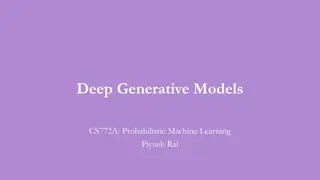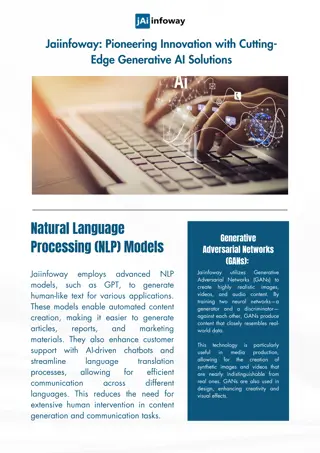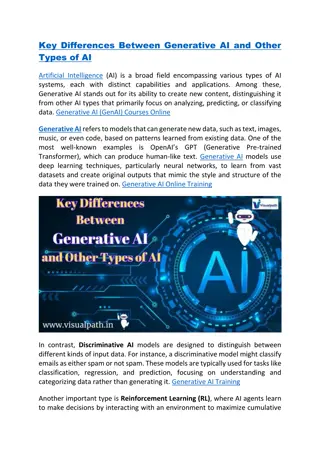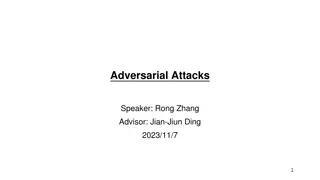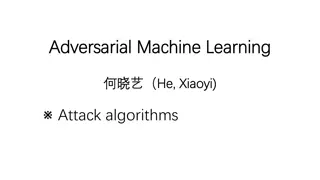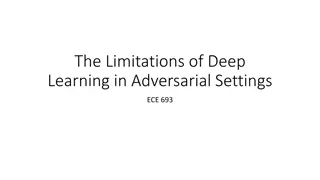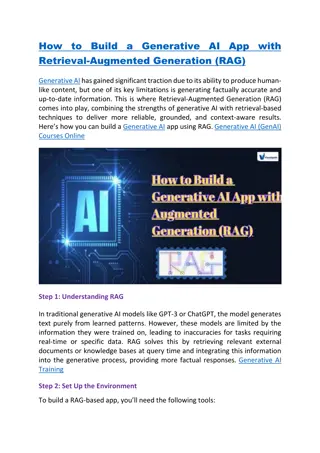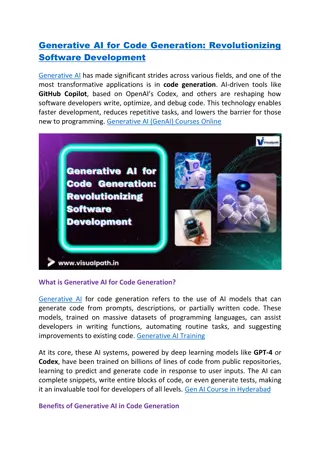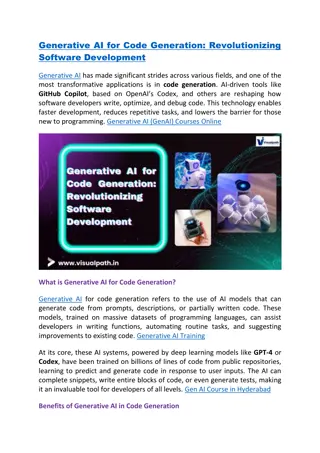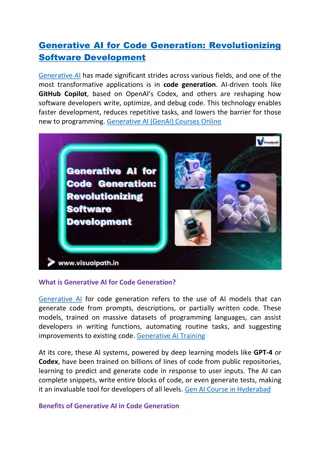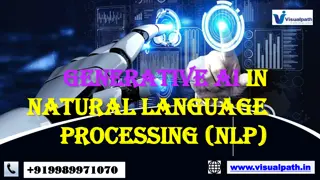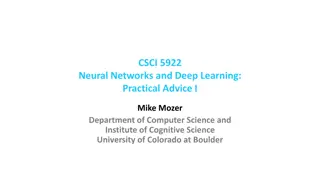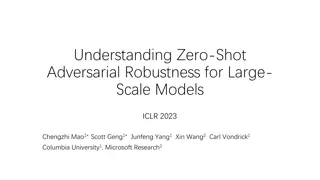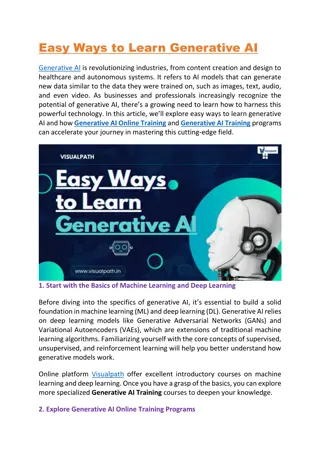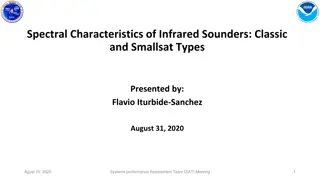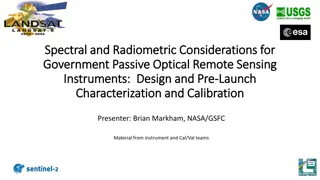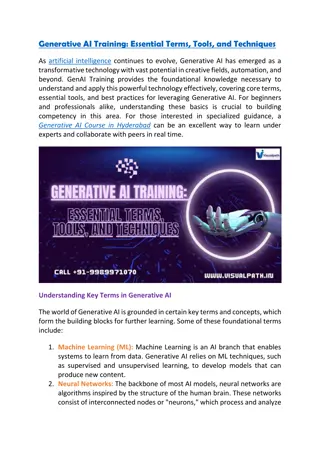Spectral Normalization for Generative Adversarial Networks
Spectral normalization is a technique used in Generative Adversarial Networks (GANs) to address issues like non-convergence, mode collapse, and gradient problems. By normalizing the spectral norm of weight matrices, SN helps stabilize training and improve quality. Explore the benefits and applications of spectral normalization in GANs through examples and results on datasets like CIFAR-10 and STL-10.
Download Presentation

Please find below an Image/Link to download the presentation.
The content on the website is provided AS IS for your information and personal use only. It may not be sold, licensed, or shared on other websites without obtaining consent from the author.If you encounter any issues during the download, it is possible that the publisher has removed the file from their server.
You are allowed to download the files provided on this website for personal or commercial use, subject to the condition that they are used lawfully. All files are the property of their respective owners.
The content on the website is provided AS IS for your information and personal use only. It may not be sold, licensed, or shared on other websites without obtaining consent from the author.
E N D
Presentation Transcript
SPECTRAL NORMALIZATION FOR GENERATIVE ADVERSARIAL NETWORKS Speaker:
Outline Introduction of GAN Spectral Normalization Results on CIFAR-10 and STL-10 Conclusion
Generative Adversarial Network (GAN) Generated bedrooms
Generative Adversarial Network (GAN) Style Transfer
Disadvantages Non-convergence: the model parameters oscillate, destabilize and never converge Mode collapse: the generator collapses which produces limited varieties of samples Diminished gradient: the discriminator gets too successful that the generator gradient vanishes and learns nothing Unbalance between the generator and discriminator causing overfitting Highly sensitive to the hyperparameter selections.
Notations Discriminator network x : input image ak: element-wise non-linear activation function Final output of the discriminator , learning parameters set
Objective function The standard formulation of GANs = Usually x is real image, x is fake image
Lipschitz continuous ( ) f x ( ) f x x M , for any x, x x f = the smallest possible value M Lip f = ReLU, leaky ReLU 1 f = Lip
Spectral norm For matrix A, spectral norm which is equivalent to the largest singular value of A Each layer Linear layer
Spectral norm Upper bound on are all equal to 1, (e.g. leaky ReLU)
Spectral Normalization (SN) Normalizes the spectral norm of the weight matrix W Use power method to produce the first left and right singular vectors is bounded from above by 1 Approximate the spectral norm by
Accuracy Spectral norms of all 7 convolutional layers in the standard CNN during course of the training on CIFAR-10
Results on CIFAR-10 and STL-10 Weight clipping (WC) WGAN-GP Batch normalization (BN) Layer normalization (LN) Weight normalization (WN) Orthonormal regularization SN-GAN
Results on CIFAR-10 and STL-10 Hyper-parameter settings : learning rate : first, second order momentum (Adam Optimizer) , 1 2 n : number of updates of the discriminator per one update of the generator dis
Inception Score Image Quality & Image Diversity higher is better
Frechet Inception Distance (FID) lower is better are the mean and covariance matrix
Training time Computational time for 100 updates
Conclusion Spectral normalization (SN) as a stabilizer of training of GANs. The generated examples are more diverse than the conventional weight normalization and achieve better or comparative inception scores relative to previous studies. The method imposes global regularization on the discriminator as opposed to local regularization introduced by WGAN-GP, and can possibly used in combinations.
Reference [1] Miyato, Takeru, et al. "Spectral normalization for generative adversarial networks." arXiv preprint arXiv:1802.05957 (2018). [2] Goodfellow, Ian, et al. "Generative adversarial nets." Advances in neural information processing systems. 2014. [3] Gulrajani, Ishaan, et al. "Improved training of wasserstein gans." Advances in neural information processing systems. 2017. [4] Warde-Farley, David, and Yoshua Bengio. "Improving generative adversarial networks with denoising feature matching." (2016). [5] Radford, Alec, Luke Metz, and Soumith Chintala. "Unsupervised representation learning with deep convolutional generative adversarial networks." arXiv preprint arXiv:1511.06434 (2015).


